The Forbidden City and Peking Duck Dinner
China: 10th October
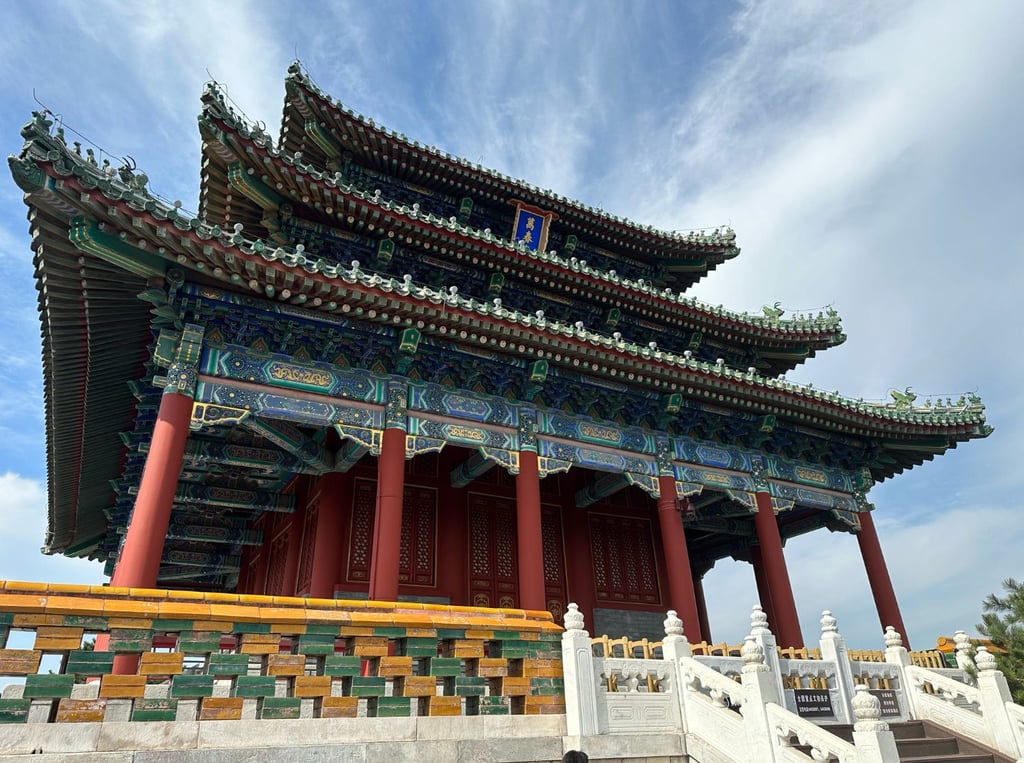

It was an early start today, we had to be up early to get back in our minivan to go to the hostel we left our bags in yesterday, and we have a lot planned for today including what I am very much looking forward to a Peking duck dinner. The journey is roughly two hours and I notice that my phone still doesn’t seem to have any data even though I got a new SIM yesterday. When we get back to our hostel unfortunately the double room we had access to yesterday wasn’t a glimpse into my future and I am back in a shared room with seven other beds and the toilets and showers being shared between all the non-private rooms down the hall. Personally I wouldn’t consider two toilets and two showers for at least sixteen, maybe more, enough but, hey, we work with what we’ve got. After dropping the bags we are out for a tour of the city.
Our first stop is Jingshan Park, originally an imperial garden covering 57 acres, it was attached to the Forbidden City, created for the emperor and his family. The park houses Prospect Hill an artificially made hill which was created using the clay and mud dug up to build the moat that surrounds the Forbidden City. As we arrive at the base of the hill, I tell Tony about my phone still not having data and he gives me the number for China Mobile, the network I am currently using. The only problem being that all that tells me is that my sim is blocked and I need to call another number which doesn’t have an English option. Luckily Tony takes my phone and after getting through to an operator finds out that the shop yesterday for some reason didn’t take the right money off me and I owe 8 Yuan. Tony kindly offers to top me up on his phone and I give him the cash to save another trip to a store. With my phone back in working order, Tony continues to tell us the history of this park and hill. As I have mentioned it was created as a serene and peaceful get away for the imperial family still considered a part for the Forbidden City although not within it’s walls. Access was only granted to the family and their staff.
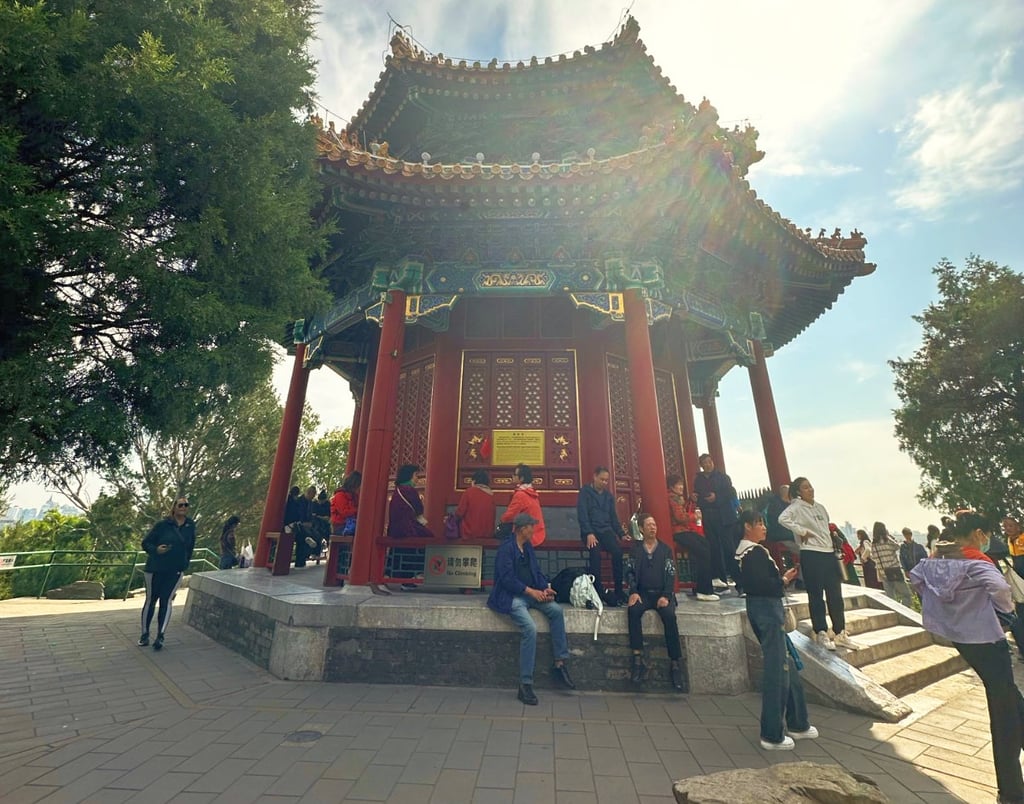



Our next stop is Tiananmen Square surrounded by Chairmen Mao’s Mausoleum, the Chinese Government building, the National Museum and the Forbidden City gates, over which a massive picture of Mao is placed. It is at this point I stupidly ask Tony how Mao is considered in modern China considering the destruction he did to so many historic sites and how much of Chinese history he ordered destroyed. Tony replies that he was human and made mistakes but is still the founder of the country and the communist party and is revered in extremely high esteem across the whole of China; a sentiment I am not sure is shared across the whole of the country, but I don’t push any further. Having passed through many levels of security both before the square and at the gate, we enter the Forbidden City. The place is massive; in fact it is the largest palatial complex in the world with 980 buildings and a history of housing 24 different emperors throughout their reigns. There is history seeping out of the walls here. The buildings are in surprisingly good condition although this isn’t that surprising when you learn that they have been re-built many times throughout history. Being built of wood makes the place a bit of a fire hazard but the best example of no nail wooden slate architecture, where the buildings are often held up by wooden columns and a series of complex slotted wooden beams. But there are still many elements of history that have survived; for instance, one of the named gateways still has an arrow stuck in it from a failed assassination/revolution attempt, where all those involved, including the traitor who opened the external gate, and all of their families where quickly killed. On a lighter note Tony goes on to inform us of the importance of the animal depictions on the edges of the roofs; the more animals the more important the building. Unsurprisingly, the one with the most is the imperial housing.
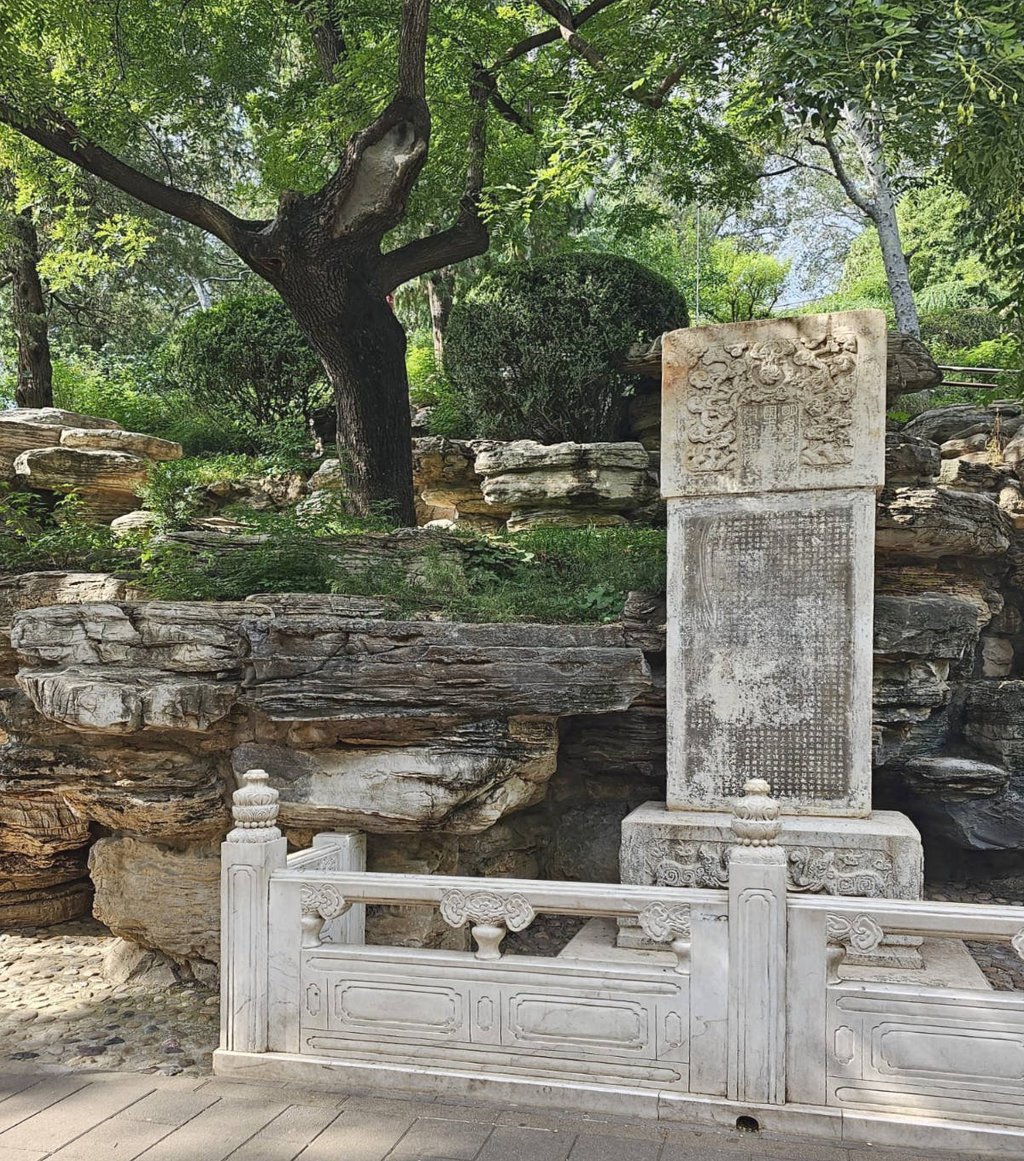

Ancient Beijing, Tony goes on to tell us, was made up of four different layers the inner most being the Forbidden City, the grounds and home to the Emperor, his family, staff and concubines. Outside this inner layer was the Imperial City for high ranking officials in the army and government. Outside that was the Inner City for successful merchants and those of high status to live followed, finally, by the Outer City for common folk and undesirable castes and creeds. Once at the top of Prospect Hill we had passed many pavilions, including the Wonder Appreciation Pavilion and The Pavilion of Gathering Fragrance. Next to the All Time Spring Pavilion, at the centre point of Beijing, one gets an amazing view across the city seeing across the whole of modern Beijing as well as the ancient city. Many of Beijing’s sights can be seen from here: the National Theatre nicked named the birds egg, both the Bell and Drum Towers and the Chinese Parliament nicknamed the second Forbidden City, due to it’s security. During our journey around this park and hill, Tony tells us the tragic story of the last Emperor of the Ming dynasty. While living in the Forbidden City in Beijing, the Great Wall was breached and an enemy army made it’s way to the city. With a sense of the incoming doom and, inevitably, the end of the Dynasty, Emperor Chongzhen made the decision to kill his wife and children in the Forbidden City before making his way to a tree at the foot of Prospect Hill and hanging himself – officially ending the Ming Dynasty. Shortly after, the invading army arrived and sacked the city but their success was short-lived. Soon the incumbent army arrived and regained control. The tree on which the Emperor hung himself was burnt down during the cultural wars, when Chairman Mao waged a war against not only capitalism but anything Imperial, wiping out many of China’s historic sites before forming the Communist party and ‘founding’ the country – but a tree has since been replanted in the same spot.
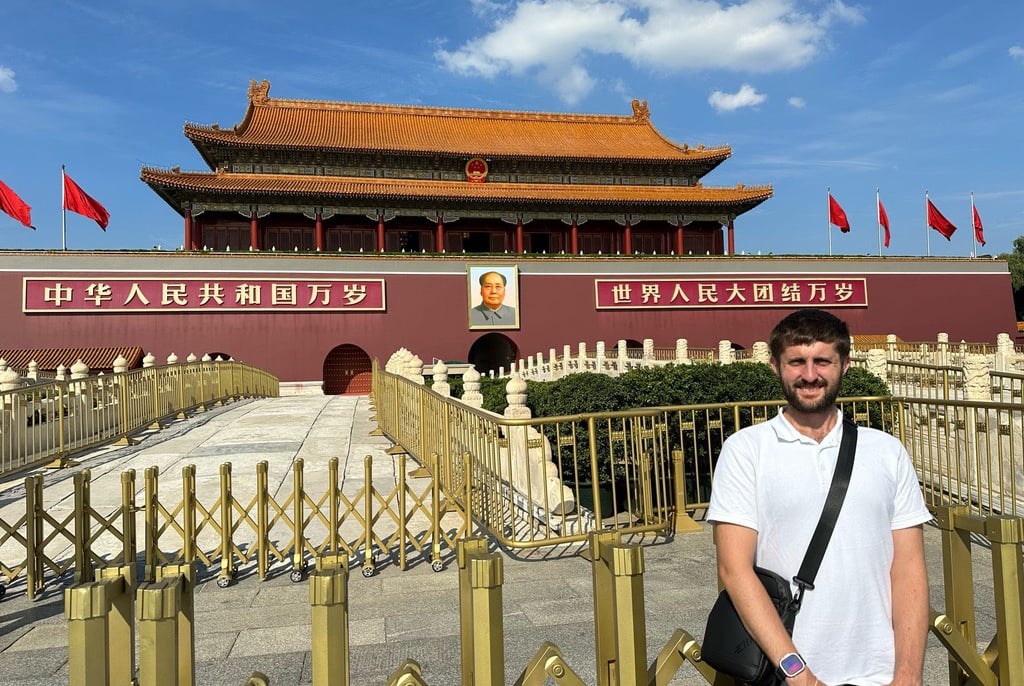

As you work your way through this massive palace near the back end on the left is a whole area dedicated to ‘retired’ concubines. These are concubines whose emperor has died but still live on the royal grounds. One of the busiest areas in the whole palace was the living quarters of the ‘Dragon Lady’. Empress Dowager Cixi started her life as a low level concubine of the Xianfeng Emperor but in her adolescence she grew to a high level of power when she gave birth to his only son. Upon the Emperor’s death her son became the Emperor, being only five years old at the time. Cixi became co-empress dowager ruling in coalition with the late emperor’s wife. Tony says she was a shrewd politician who quickly seized power by ousting many high ranking officials, as well as poisoning her co-empress. Tony says the official history is that the co-empress dies of natural causes but it is well known she was murdered by Cixi. When her son later died at an early age Cixi maintained power by electing her nephew, her sister’s son, to become the next emperor. She is said to have effectively ruled China over a reign of 50 years in the late Qing dynasty. Having done a little bit of my own research, she seems to get a bad rap with many in China believing her to be evil and manipulative, using her position and any means necessary for personal gain, and ultimately being a major factor in the loss of Taiwan to Japan and the fall of the Qing dynasty, although she had, in fact, prolonged it. Many non-Chinese modern historians believe the so called ‘Dragon-Lady’ may have been a great politician and did a lot to prolong the Qing dynasty. The evil mythology around her comes more from being a scapegoat of the communist party, looking to blame someone for deep rooted issues in China. After all she was responsible for many reforms in China, such as the abolition of slavery and many ancient torture methods, even if the reforms were belated. Anyway, whether for better or worse, her living quarters remain very busy and her impact on Chinese culture is universally agreed to have been massive.

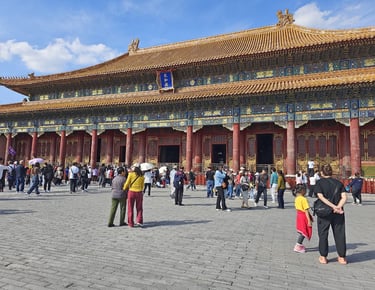


Wanchun Pavilion
Guanmiao Pavilion
View from the top of Prospect Hill in Jingshan Park
Spot where Chongzhen, the last emperor of the Ming Dynasty, hanged himself
Long live the People's Republic of China. Long live the great unity of the peoples of the world.
Hall of Preserving Harmony, Tiananmen Square
Ceiling of the Pavilion of One Thousand Autumns


18 meter tall flower basket - a decoration for China's National Day holiday.
Having been all palaced out, the group heads back to our hostel to rest before setting off for a meal I have been looking forward to since I booked this trip, Peking Duck. Although, to be honest, there has been a little confusion as Tony insists on calling it Beijing Duck, Peking being the old European name for Beijing. Anyway we get to the menu and although Tom and I insist we should definitely order three ducks between the six of us, Tony orders two, but he makes up for it with the ‘sides’ he orders. I say sides but they are full extra dishes including fried rice, more sweet and sour pork and a sweet potato dish which I haven’t had before. The meal was easily the best one I have had in China yet, Peking duck pancakes have always been my go to for a Chinese takeaway and they do not disappoint here, although I wish they had come with more spring onion. Something they do do differently here is that they take the skin of the duck and dip it in sugar and eat it separately, personally I find this too sweet after trying it and prefer to keep the crunch of the skin in the pancake. Anyway it is a great meal that everyone enjoys, so much so that we agree three ducks should have been ordered! After which we are back at the hostel for an early night after what was a great, but rather long day!
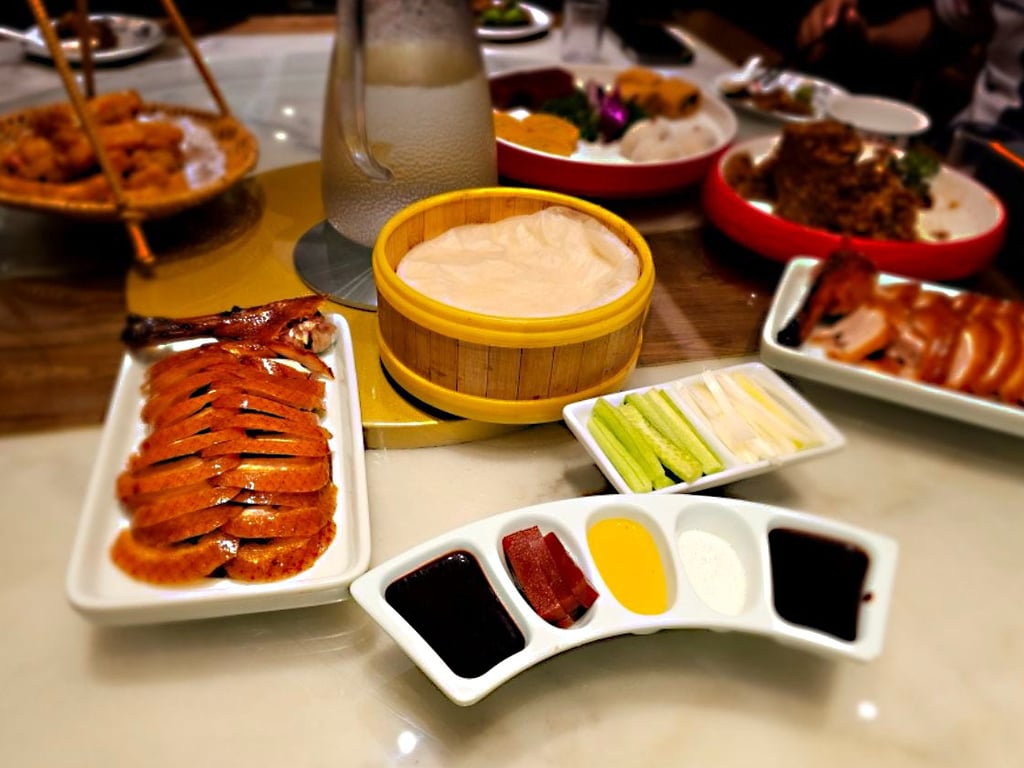

Peking (Beijing) duck
I hope you've enjoyed reading my blog.
If you'd like to make contact, please email: thomashutton@duck.com



